Abstract
Whether insulin-mediated vasodilation is important in determining insulin's overall action to stimulate glucose uptake is unknown. To this end, we measured leg glucose uptake during euglycemic hyperinsulinemic clamps performed at two insulin doses (40 mU/m2 per min, n = 6 and 120 mU/m2 per min, n = 15) alone and during a superimposed intrafemoral artery infusion of GN-monomethyl-L-arginine (L-NMMA) designed to blunt insulin-mediated vasodilation. During the higher dose study, hyperinsulinemia resulted in about a twofold rise in basal leg blood flow from 0.24 +/- 0.02 to 0.45 +/- 0.05 liter/min, P < 0.0001. L-NMMA infusion resulted in a net 21% reduction in leg glucose uptake from 114 +/- 18 mg/min to 85 +/- 13 mg/min, P < 0.001. We also found a significant relationship between the rate of insulin-stimulated whole body glucose uptake and the magnitude of flow dependent glucose uptake (r = 0.57, P = 0.02). Data obtained during the lower dose insulin infusion resulted in similar findings. In conclusion, in healthy lean subjects, insulin-stimulated muscle blood flow contributes to both insulin responsiveness and insulin sensitivity. The most insulin-sensitive subjects appear to be the most reliant on muscle perfusion for insulin action. Insulin-mediated vasodilation is an important physiological determinant of insulin action.
Full text
PDF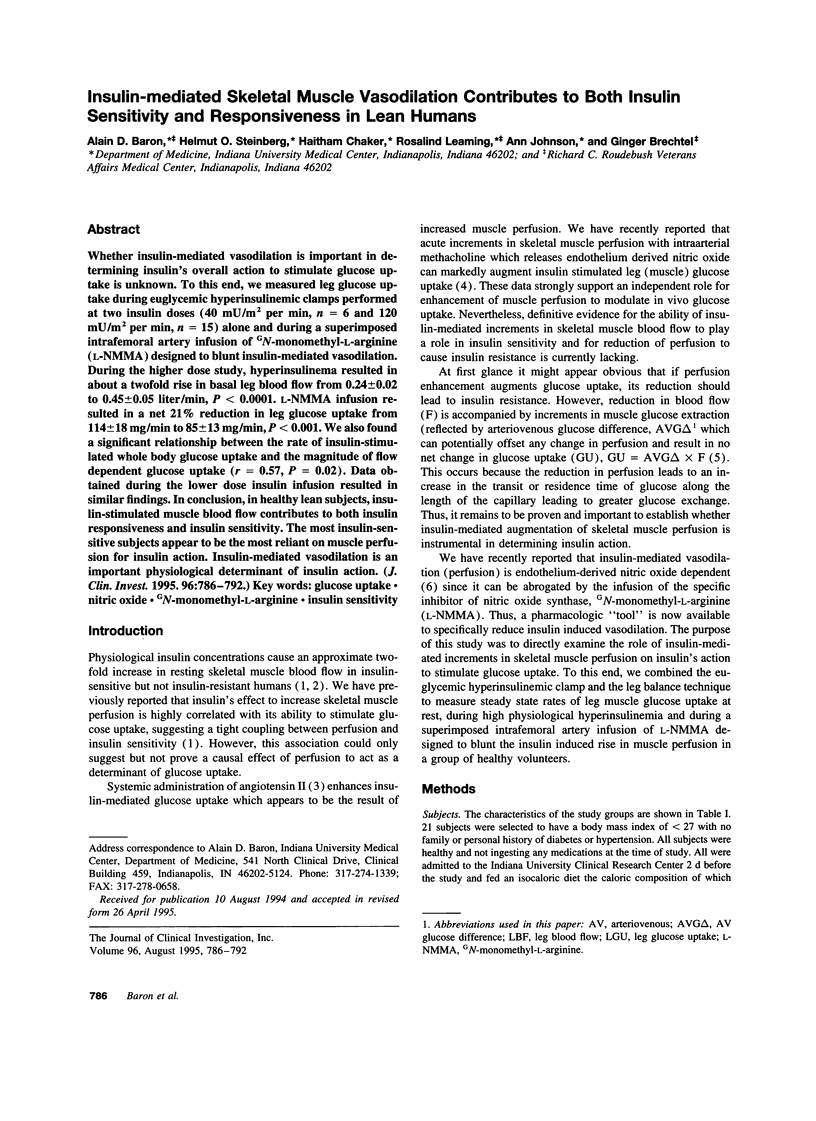
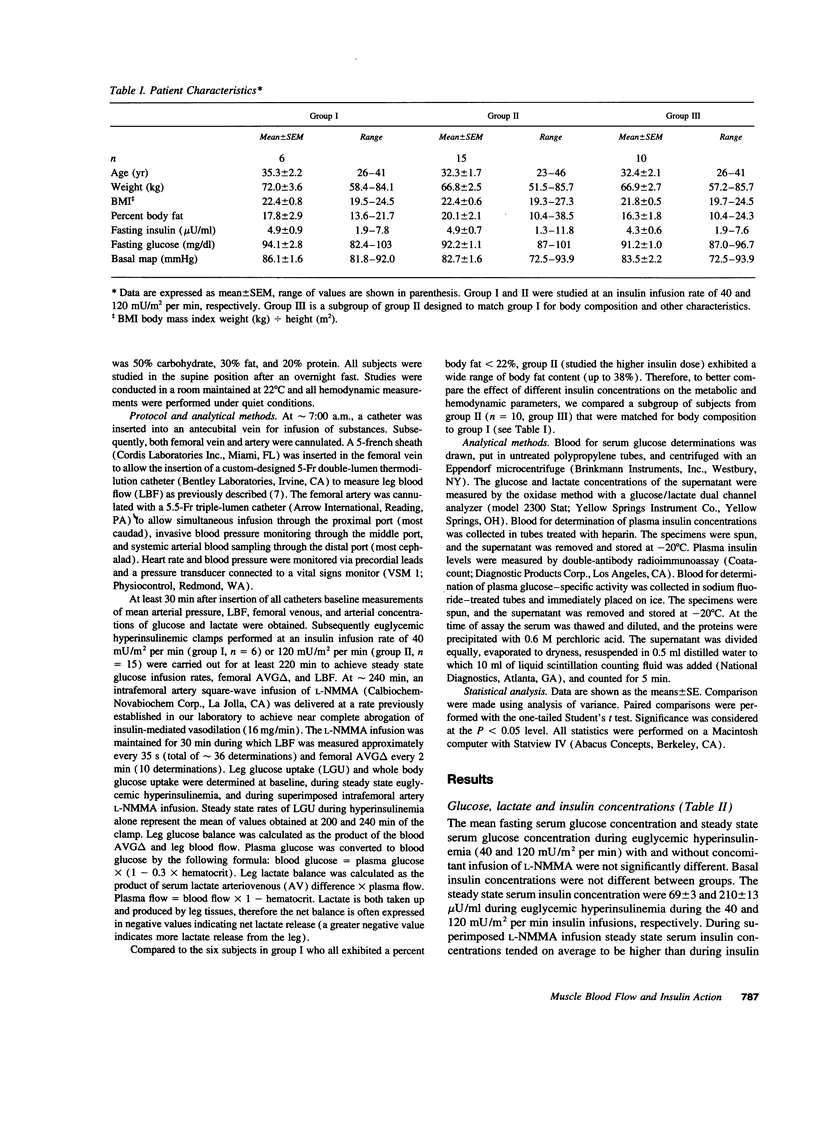
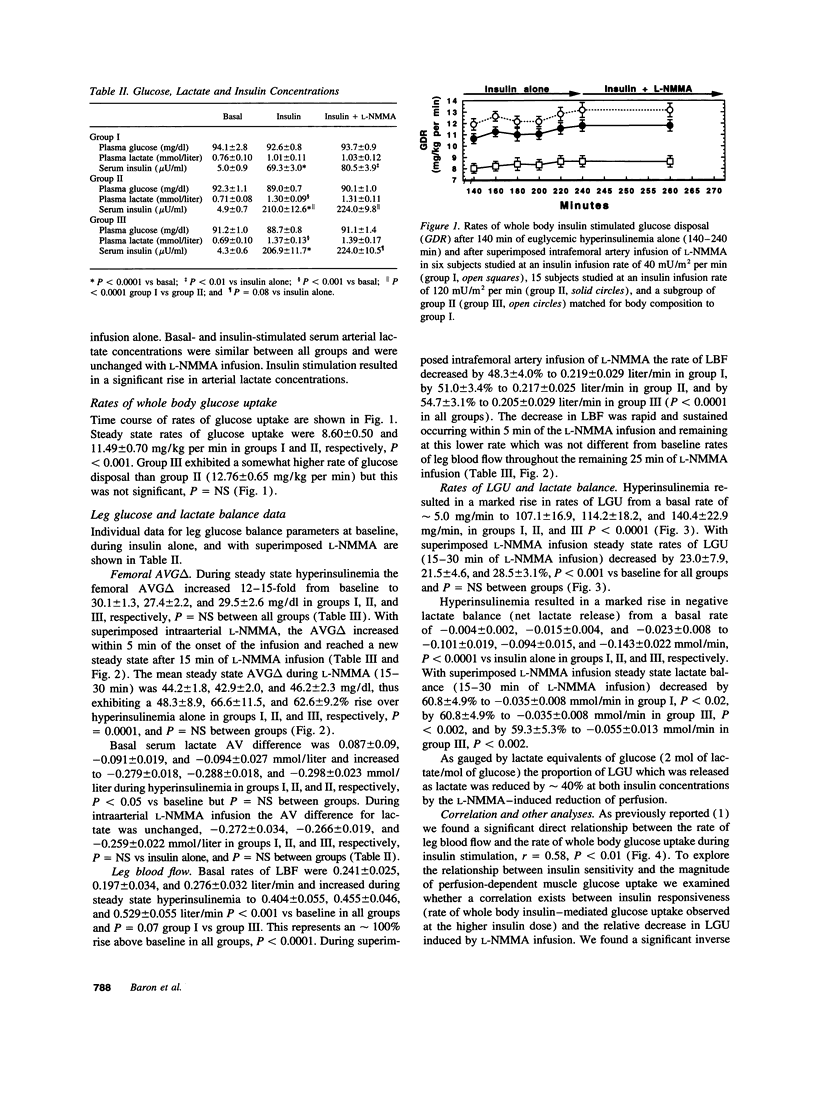
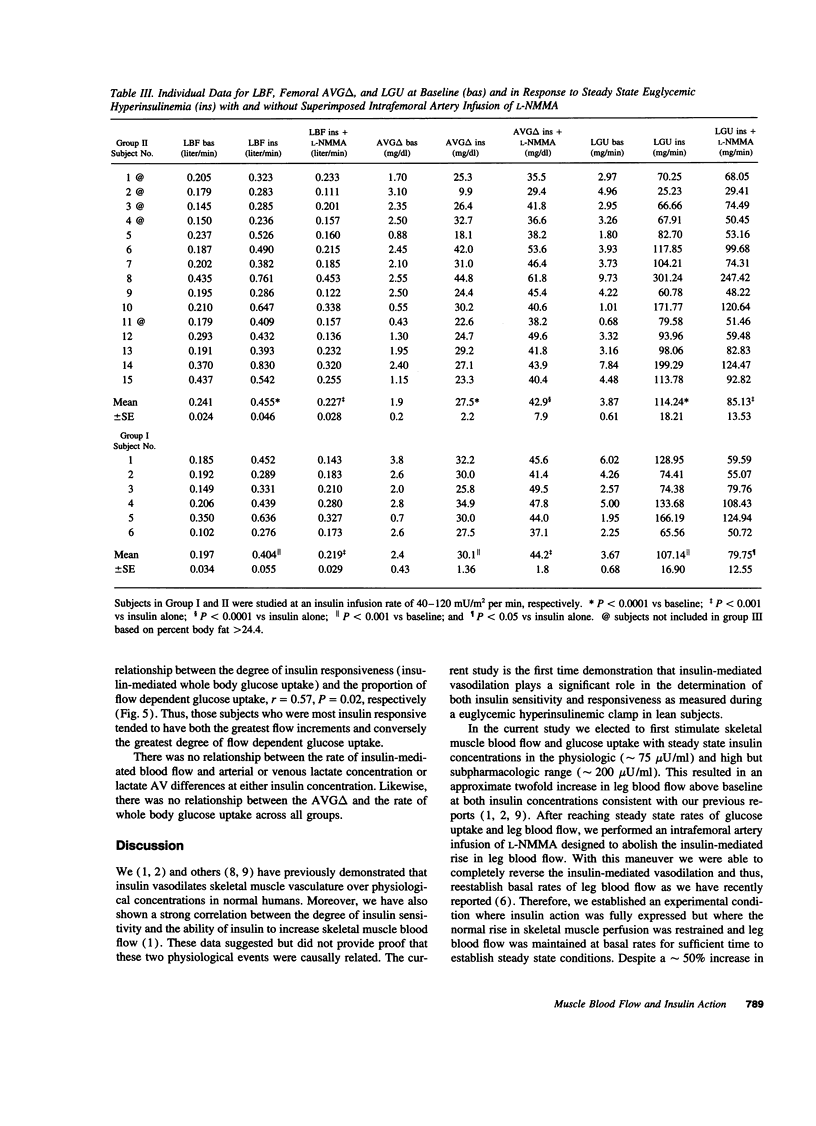
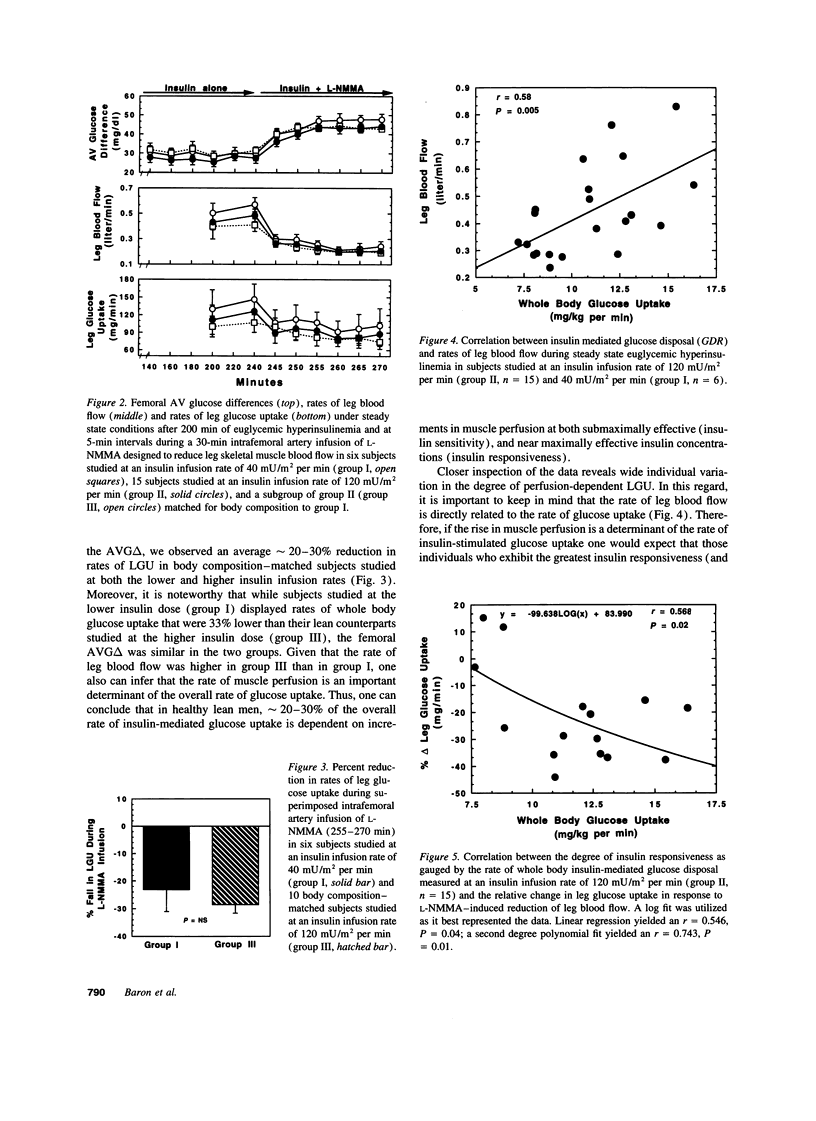
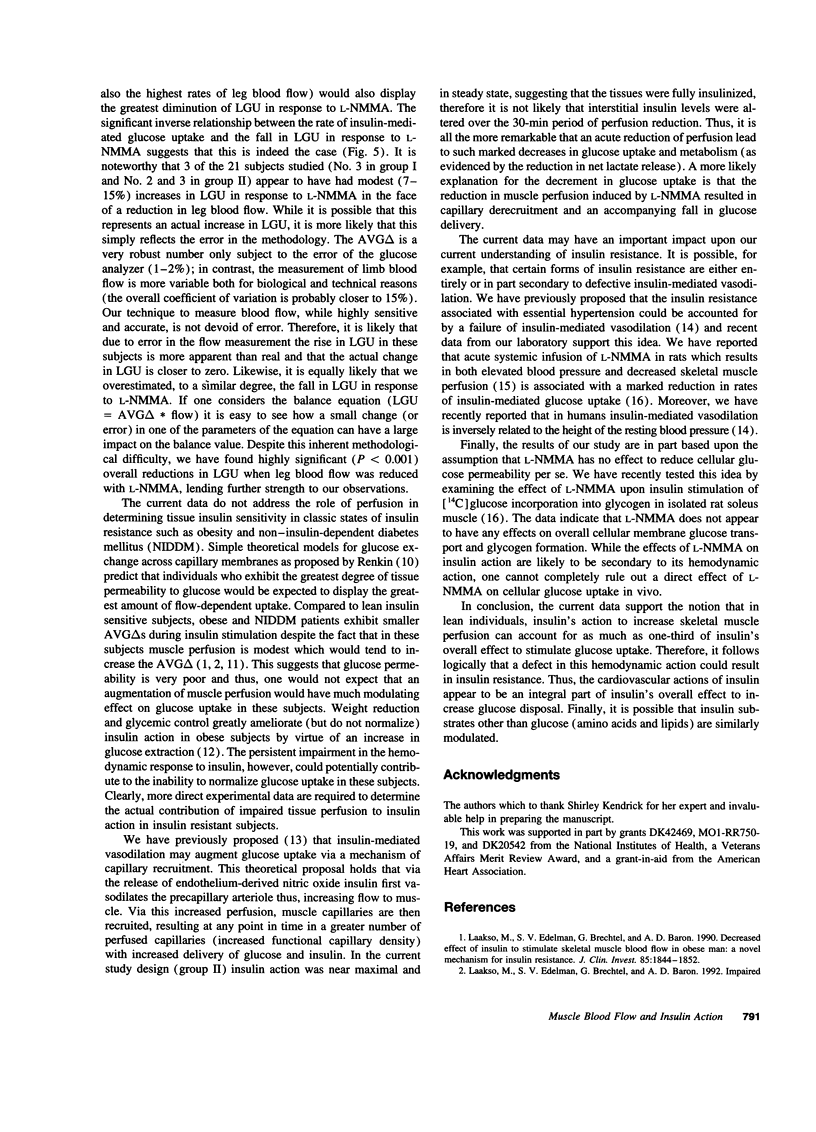
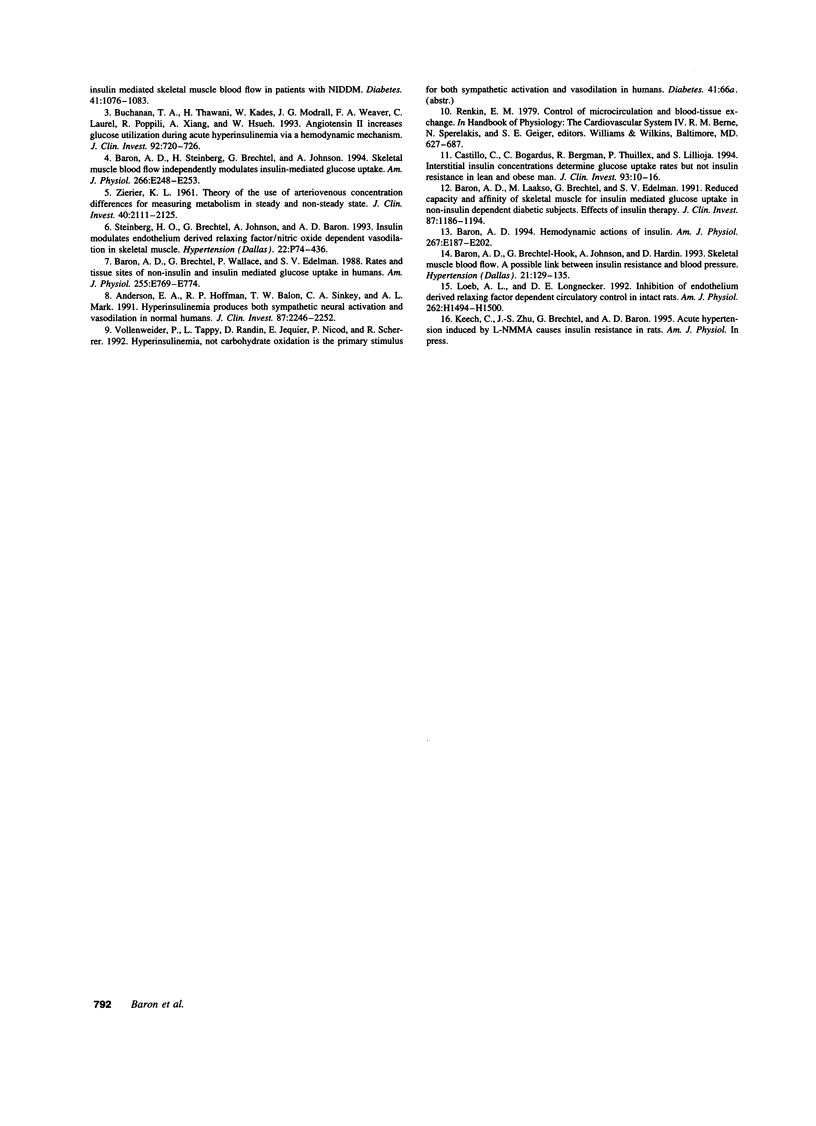
Selected References
These references are in PubMed. This may not be the complete list of references from this article.
- Anderson E. A., Hoffman R. P., Balon T. W., Sinkey C. A., Mark A. L. Hyperinsulinemia produces both sympathetic neural activation and vasodilation in normal humans. J Clin Invest. 1991 Jun;87(6):2246–2252. doi: 10.1172/JCI115260. [DOI] [PMC free article] [PubMed] [Google Scholar]
- Baron A. D., Brechtel-Hook G., Johnson A., Hardin D. Skeletal muscle blood flow. A possible link between insulin resistance and blood pressure. Hypertension. 1993 Feb;21(2):129–135. doi: 10.1161/01.hyp.21.2.129. [DOI] [PubMed] [Google Scholar]
- Baron A. D., Brechtel G., Wallace P., Edelman S. V. Rates and tissue sites of non-insulin- and insulin-mediated glucose uptake in humans. Am J Physiol. 1988 Dec;255(6 Pt 1):E769–E774. doi: 10.1152/ajpendo.1988.255.6.E769. [DOI] [PubMed] [Google Scholar]
- Baron A. D. Hemodynamic actions of insulin. Am J Physiol. 1994 Aug;267(2 Pt 1):E187–E202. doi: 10.1152/ajpendo.1994.267.2.E187. [DOI] [PubMed] [Google Scholar]
- Baron A. D., Laakso M., Brechtel G., Edelman S. V. Reduced capacity and affinity of skeletal muscle for insulin-mediated glucose uptake in noninsulin-dependent diabetic subjects. Effects of insulin therapy. J Clin Invest. 1991 Apr;87(4):1186–1194. doi: 10.1172/JCI115117. [DOI] [PMC free article] [PubMed] [Google Scholar]
- Baron A. D., Steinberg H., Brechtel G., Johnson A. Skeletal muscle blood flow independently modulates insulin-mediated glucose uptake. Am J Physiol. 1994 Feb;266(2 Pt 1):E248–E253. doi: 10.1152/ajpendo.1994.266.2.E248. [DOI] [PubMed] [Google Scholar]
- Buchanan T. A., Thawani H., Kades W., Modrall J. G., Weaver F. A., Laurel C., Poppiti R., Xiang A., Hsueh W. Angiotensin II increases glucose utilization during acute hyperinsulinemia via a hemodynamic mechanism. J Clin Invest. 1993 Aug;92(2):720–726. doi: 10.1172/JCI116642. [DOI] [PMC free article] [PubMed] [Google Scholar]
- Castillo C., Bogardus C., Bergman R., Thuillez P., Lillioja S. Interstitial insulin concentrations determine glucose uptake rates but not insulin resistance in lean and obese men. J Clin Invest. 1994 Jan;93(1):10–16. doi: 10.1172/JCI116932. [DOI] [PMC free article] [PubMed] [Google Scholar]
- Laakso M., Edelman S. V., Brechtel G., Baron A. D. Decreased effect of insulin to stimulate skeletal muscle blood flow in obese man. A novel mechanism for insulin resistance. J Clin Invest. 1990 Jun;85(6):1844–1852. doi: 10.1172/JCI114644. [DOI] [PMC free article] [PubMed] [Google Scholar]
- Laakso M., Edelman S. V., Brechtel G., Baron A. D. Impaired insulin-mediated skeletal muscle blood flow in patients with NIDDM. Diabetes. 1992 Sep;41(9):1076–1083. doi: 10.2337/diab.41.9.1076. [DOI] [PubMed] [Google Scholar]
- Loeb A. L., Longnecker D. E. Inhibition of endothelium-derived relaxing factor-dependent circulatory control in intact rats. Am J Physiol. 1992 May;262(5 Pt 2):H1494–H1500. doi: 10.1152/ajpheart.1992.262.5.H1494. [DOI] [PubMed] [Google Scholar]
- Zierler K. L. THEORY OF THE USE OF ARTERIOVENOUS CONCENTRATION DIFFERENCES FOR MEASURING METABOLISM IN STEADY AND NON-STEADY STATES. J Clin Invest. 1961 Dec;40(12):2111–2125. doi: 10.1172/JCI104437. [DOI] [PMC free article] [PubMed] [Google Scholar]


